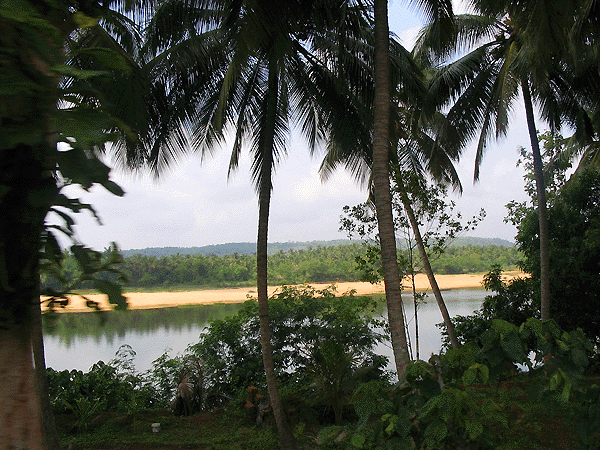Worship of Lord Brahma, Part 43
BY: SUN STAFF
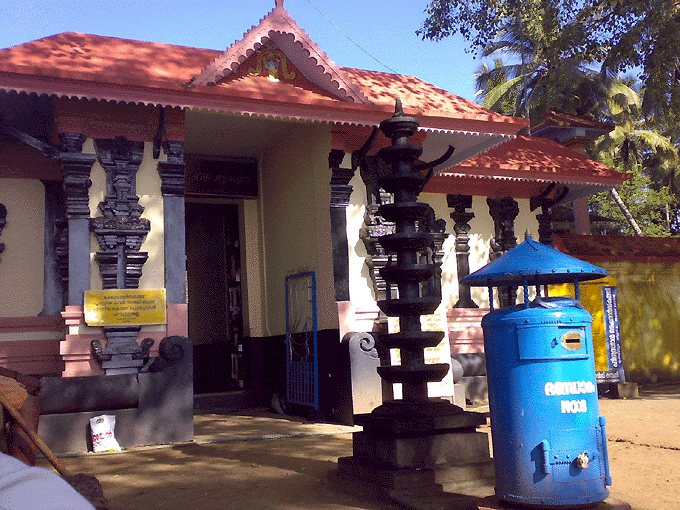
Thirunavaya Temple
Sep 20, CANADA (SUN) — A serial exploration of places of Lord Brahma's worship.
Lord Brahma at Thirunavaya
Following yesterday's comments on the questions surrounding a Brahma temple in Kottakkal, today we look at a temple dedicated to Brahmadeva that is very likely the temple so often mentioned in this regard. The Thirunavaya temple complex is 27 km. south of Kottakkal. We use the word 'complex' loosely here – in reality, these are several independent temples in close proximity to one another, but they do not appear to be managed by a single temple authority.
Thirunavaya, in the Malappuram district of Kerala, is 8 kms. south of Tirur near Ponnani, and 12 km. off the coast, due west of Coimbatore. An ancient temple town, Thirunavaya was built along the banks of the Bharathapuzha River, the longest river in Kerala, which winds westward to the coast. At Thirunavaya, the Bharathapuzha (also known as the Nila) makes a distinct loop northward, and there are a number of important sites here on both sides of the river.
Like several other locations we've covered in this series, Thirunavaya represents a convergence of the Trimurtis: Brahma, Visnu, Siva. There are three temples here, dedicated to the worship of these divine personalities, therefore the place is considered to be equal to Varnasi.
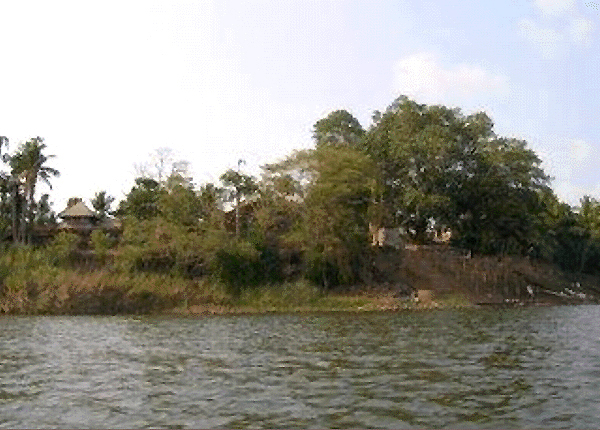
Brahma and Siva Temples on
the Bharathapuzha's southern bank
The Brahma Temple
The Navamukundan Visnu temple is on the right (northern) bank of the Bharathapuzha, while the Brahma and Siva temples are on the left (southern) bank, in Tavanur (Thavanoor) village.
The Brahma Temple here was consecrated by Lord Parasurama, who brought and settled the Brahmins here. Parasurama himself is considered to be a "Brahma-Kshatriya", or one who perfectly balances the duties of both Brahmana and Kshatriya. For this reason, Brahmadeva is said to be Parasurama's guru, and having executed a great yajna here in Tavanur, Parasurama dedicated a temple to his guru, Lord Brahma.
Unfortunately, the Brahma Kshetra is seldom visited today, and no regular worship or festivals are held here. Most devotees and visitors go to the Navamukundan Temple, which is the predominant temple in Thirunavaya. At Navamukundan there is a daily program of worship, including regular Brahma pujas.
Near the Siva Temple sits the famous Vedic Vidyalaya Othanmar Madom, a famous school of Sanskrit and Vedic education associated with Parasurama's colony of Brahmins.
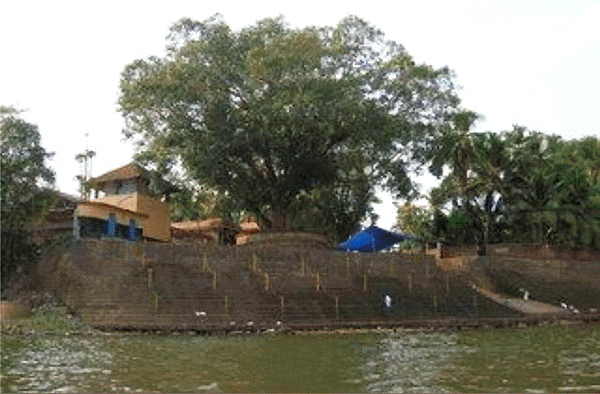
Navamukundan Temple
Navamukundan Visnu Temple
This 6,000 year old temple was constructed by the Navayogis, thus the Deity is known as 'Nava Mukunda'. The term 'nava' also refers to the fact that this Deity was the 9th one to be installed in the temple by the nine rishis. The first eight murtis sank and disappeared as soon as they were installed. The ninth sank up to its knees before it stopped, and it remains in this position to this day.
Because of the unique position of the Deity, the Navamukundan temple has a special sannadhi, or altar in the sanctum. There is believed to be a large (bottomless) pit beneath the Deity.
In addition to Maha Visnu, the presiding Deity at Navamukundan, there are several Upadevathas (subsidiary deities), including Laksmi Devi and Ganapati. The temple also has beautifully carved sculptures around the sanctum sanctorum, carvings of the Dasavatar, and sculptures narrating Lord Siva's pastimes.
The temple pond is full of lotus flowers, and a large Banyan tree is in front of the temple, facing the river. Strangely enough, the Banyan does not have a portion disappearing below-ground. Aside from the rare position of the Deity and the odd Banyan, there are other unusual aspects of this temple. For one, it is difficult to judge the direction the water is flowing near the temple. Also, the riverside mandapam, where the Deity is placed to give darshan during processions, has an unusual feature: when looking out from the temple, the mandapam looks like it's outside the temple wall, but from outside looking in, it looks like it's sitting inside the wall.
It is said that the sage Markandeya once escaped from Yama and came here to Navamukundan for shelter. The Lord opened His backdoor and instructed Markandeya to run to Siva, across the riverbank, as only he could save him.
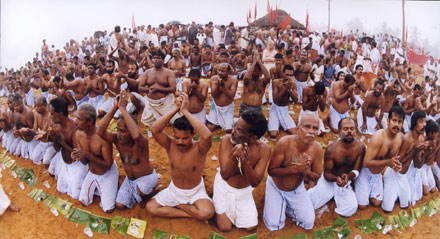
Thousands offer Vavu bali to the departed souls on Karkita Vavubali day at Thirunavaya

